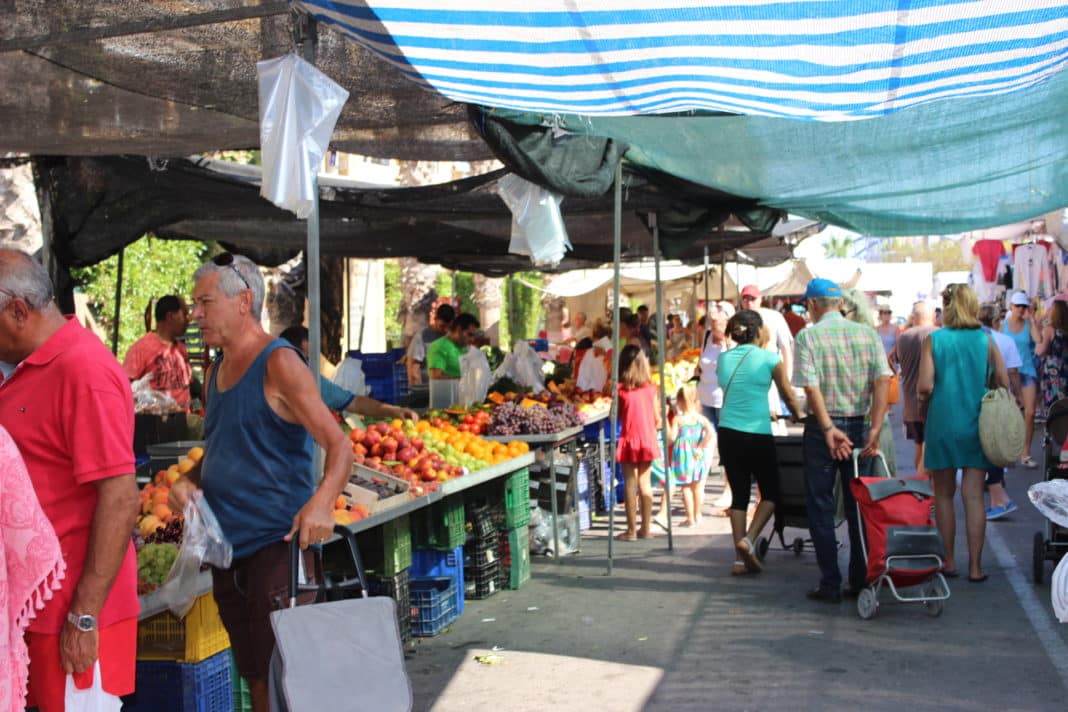Until she moved into her own home, one young lady told us that she had never been aware of prices in the supermarket. “My mum bought what was needed for the house, so don’t ask me what a litre of milk cost because I just didn’t know.
However, since moving out of her parents home, she now knows exactly what it costs to fill the weekly supermarket trolley, which she says is continually rising and is now between 50 and 60 euros more than just last year, so, after paying little attention to the items she put in the family basket, she now looks at supermarket own brands and compares labels every time she picks an item up..
The unstoppable rises in the price of food is not only making it more and more difficult for people to fill the fridge, but it is also creating an ever increasing gap between what is paid for a product at source and what the public end up paying for it at the supermarket.
An example, farmers in the province of Alicante receive about 0.30 euros for a kilo of lemons that they pick from the tree. In many of the shops those same lemons will cost about 2.49, that is a staggering 830% more expensive than what the farmer receives.
The increases in the price of this fruit, very widespread in Alicante orchards, is a reflection of what has been happening across the whole the market in recent years.
Although the price at origin has remained stable —between 0.30 and 0.40 euros per kilo, with the exception of 2016, when farmers were paid up to 0.67 euros/kilo—, the value of lemons in stores and supermarkets has increased from 1.89 euros per kilo in 2016 to 2.49 at present, according to the data published by el Observatorio de la Cadena Alimentaria, of the Ministry of Agriculture, Fisheries and Food, and el Observatorio de Precios, prepared by the Association of Young Farmers (Asaja).
This latest report also reflects that the gap between the price in the field and that paid by the consumer has continued to widen remarkably in the last twelve months. While the gap between the two prices in March 2022 was 663%, it has now increased to 830%. In other words, while the farmer continues to charge the same for producing lemons, the public is paying 20% more, more than triple the 6.1% rise in the CPI.
This same gap between the price paid to the producer and that found in stores is also repeated in many other food products.
A kilo of oranges is worth 540% more in the supermarket than what is paid for to local producers; pumpkin 620% more; artichokes 665% and in the case of fruits such as seedless grapes the figures rise to almost 1,000%, from 0.60 to 5.76 euros per kilo, and grapefruit, the farmer is paid 0.25 euros while the market charges 2.39, according to Asaja.
With eggs, meat and fish, both fresh and frozen, the same thing also happens; although in this case, in a much lower percentage than those we see with fruits and vegetables.
So what is the reason for this huge price difference? Well according to the president of Asaja, in the province of Alicante, José Vicente Andreu, “the price increases are being camouflaged with inflation.” He says that the large supermarket chains are feeding this phenomenon at the expense of intermediaries, such as purchasing centres, usually owned by the same chains.
“For many years the market has been regulated by the unwritten rule of the ‘third’: one third for the farmer, one third for the distributor and one third for the seller, but suddenly this rule has been distorted to a point at which, for farmers, it has become unsustainable. How is it possible that there are price differences of 800, 1,000 or sometimes up to 1,200% in some products, when they should not be above 300%? Who’s getting the extra profit? The countryside, of course, not, “says the spokesman for this farming organisation, who continues to repeat his request to the Government, urging compliance with the Food Chain Law, which prohibits sales at a loss.
Asaja-Alicante also urges the Government to enforce this law because “this sector is reaching limits that cannot be endured any longer.”
“There are many people who are now stopping buying certain fruits and vegetables because the prices are far too high, and if people don’t buy them, farmers don’t sell them either, so in the end there is an impasse and the one that loses, again, is the producer, “says Andreu.





